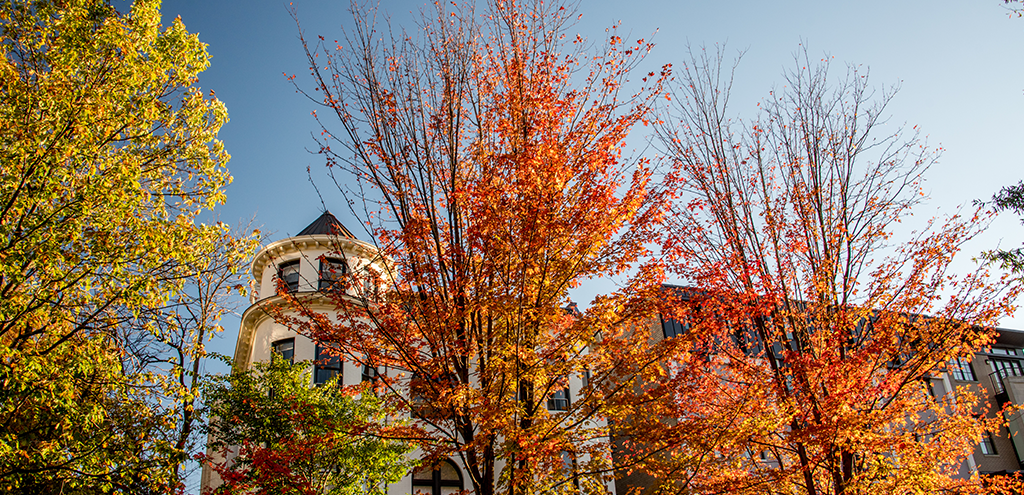THE LEAFLET

Why Exactly Do Leaves Change Color and Fall Off Trees?
Cherry trees in DC typically get all the love, but when October and November roll around we’ve all but forgotten those dainty pink buds and are enthralled instead by the fiery hues of fall foliage that blanket the District. As we admired magical maples, shocking yellow ginkgoes, and the rainbows of sweetgum, we wondered – just why do leaves change color and drop off trees in the fall?
Before we start, remember that you can bring the magical show of fall to your yard by adding a tree for free through our residential planting programs. You can also admire the show of fall from your front stoop or back patio by checking out our Fall Colors Map, which highlights showstopper trees and trees with interesting fall color. It includes trees Casey Trees has planted, as well as trees planted and managed by the city’s Urban Forestry Division. Now let’s get to it!
First up, it’s important to note that not all trees have leaves that change color. This is the key difference between a conifer and deciduous trees. Conifer trees are the ones that bear cones and have those needle-like leaves. Think of forests in colder places – full of spruce trees, pine trees, the Christmas tree type of trees. And in general, the leaves on these trees don’t change color.
For color, you need deciduous trees. They have leaves that do change color. These are the trees that, in general, also shed their leaves every year at the end of their growing season. So, think oak trees, elm trees, maple trees – those types of trees are what we’ll focus on.
Just like we focus on environmental cues to usher in fall and pumpkin spice season, so do trees. Anything that clues you into knowing that sweater weather is coming; things like the days getting shorter and the temperature getting colder. We pick up on seasonal changes and so do trees. Once trees notice these season changes (also known as phenology) it’s time to start preparing for the tree to basically hibernate in the wintertime. And that’s when the magic happens. This magic revolves around photosynthesis, which is the process of how plants harness energy from sunlight and water and carbon dioxide to make food for themselves.
To make a long story short, in order for photosynthesis to even happen in the first place, trees need a way to capture sunlight, which they do through pigments in their leaves. There are a handful of different pigments in each leaf, and each of these pigments absorbs some light and reflects the rest of it. We see so much green in the spring and summer because of the pigment known as chlorophyll. Lots of summer sunlight means lots of chlorophyll means lots of green. But the trees start picking up on those seasonal cues signaling the lack of daylight, warmth, and sunshine, the chlorophyll stops showing off and another pigment takes over, carotenoids.
Chlorophyll equals green leaves, and carotenoids equals yellow and orange leaves. There can even be a red color in some trees, produced by pigments called anthocyanins.
In the background of this whole color-changing process, the tree is also entering a sort of hibernation mode – slowing down the flow of nutrients out to the limbs, hunkering down to conserve energy so it can make it through the winter. After a leaf has cycled through its pigments, it begins to run out of energy and starts to die off. Specifically, the leaf starts to weaken at the stem, making it easy for wind, animals, excited children etc. to drop the leaves off the tree. The move from green to yellow and orange, to maybe a red grand finale is a bit like each pigment in each leaf taking a final bow before winter.
TL; DR fall foliage is a very beautiful, very slow leaf death!